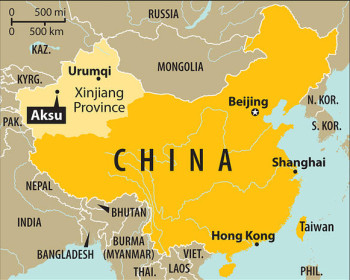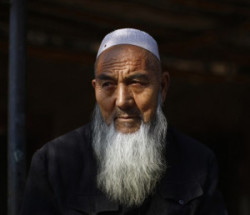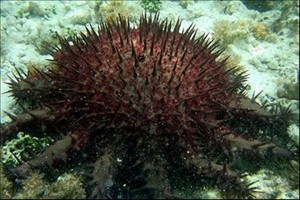News from Russia, China and Australia
Tuesday's World Events — Posted on April 29, 2014
Russia: Swearing in films banned by lower house
 The State Duma [Russian parliament] has passed a bill that would ban the use of expletives from films, theater and other works of art, casting doubt over the fate of some contemporary shows whose scripts include strong language.
The State Duma [Russian parliament] has passed a bill that would ban the use of expletives from films, theater and other works of art, casting doubt over the fate of some contemporary shows whose scripts include strong language.
The bill, approved by the Duma in its final reading on Wednesday, would also require books and video disks that contain expletives to be sold in sealed packages stamped with a warning: “contains profane language.”
A council of experts will determine exactly what counts as an expletive, according to the bill published on the parliament’s website.
The bill would also ban films that contain expletives from theatrical release, and would punish movie theaters that play such unlicensed productions by a fine of up to 100,000 ($2,797) for the first offense, and double that for a second offense. The bill, which would similarly ban the use of expletives on the radio and television, did not specify whether bleeping offensive words would make them acceptable.
Theaters may face an even more impassable quandary under the terms of the new bill, with many popular contemporary productions seemingly falling foul of the regulations. …

Russian State Duma
“In a country where everybody speaks in ‘mat’ [strong profanities], banning expletives from films and the stage is the supreme degree of hypocrisy and sanctimony,” said film director Andrei Stempkovsky.
“Mat is the most vivid form of expression, at least in the sphere of emotional manifestations,” Stempkovsky said.
Russians’ relationship with profane language is a complex one: A handful of Russian expletives are generally regarded as even less acceptable than some four-letter words in English-speaking countries, yet they commonly pop up in many Russians’ everyday speech.
While many artists, literary critics and ordinary Russians have decried the common use of profanities, others have lauded the masterly use of an occasional expletive as a powerful expressive device that cannot be replaced by a more innocuous term.
The bill will now go before the Federation Council, Russia’s upper house of parliament. If approved, it will be signed into law by President Vladimir Putin and take effect on July 1, 2014.
CHINA – Inform on your neighbor if he grows a big beard
 Officials in Shaya county issued a notice offering rewards ranging from 50 to more than 50,000 yuan ($8 to $8,000) for a wide array of information including tips on those growing beards, the Global Times said on Thursday.
Officials in Shaya county issued a notice offering rewards ranging from 50 to more than 50,000 yuan ($8 to $8,000) for a wide array of information including tips on those growing beards, the Global Times said on Thursday.Financial rewards on offer in Shaya also cover information on locals “conducting illegal religious activities”, the Global Times said, without giving further details. Xinjiang authorities have also launched a campaign labelled Project Beauty, which attempts to discourage locals from wearing veils – a common practice among Uighur women. Residents of the desert oasis city of Kashgar told AFP that to enter government offices, banks or courts, women had to remove their veils and men must be clean-shaven.

A Muslim Uighur sits outside his house near a busy market in Xinjiang province (Reuters)
Xinjiang – which covers a sixth of China’s territory – is a strategically important region which abuts Central Asia and contains significant oil and gas deposits. Police blamed suspects from the region for crashing a car in Beijing’s Tiananmen Square last October, killing two tourists and the three people in the vehicle. The incident led President Xi Jinping to call for a security push. Ilham Tohti, an outspoken Uighur academic who challenged the government’s account of the crash, was arrested on terrorism charges this year, provoking an outcry from the United States and European Union. Authorities also accused Xinjiang residents of carrying out a stabbing spree in March in the southwestern city of Kunming that left more than 30 people dead.
AUSTRALIA – Mass starfish cull to save Great Barrier Reef
The government has said it is making good progress in culling coral-eating starfish that have been blamed for munching through much of the Great Barrier Reef.
 Greg Hunt, the environment minister, said 250,000 crown-of-thorns starfish had been killed by a new culling method over the past 21 months, a four-fold increase on the previous rate of removal.
Greg Hunt, the environment minister, said 250,000 crown-of-thorns starfish had been killed by a new culling method over the past 21 months, a four-fold increase on the previous rate of removal.
The new method, developed by James Cook University, involves a single injection into the starfish; previously the multi-armed creatures needed to be injected about 20 times.
The injections, administered by divers, cause an allergic reaction in the starfish, killing it. Warren Entsch, MP for Leichhardt, said divers were now able to cull more than 1,000 crown-of-thorns starfish in a 40-minute dive.
Hunt said the new injection has “immediately improved the efficiency and effectiveness” of reducing crown-of-thorns starfish numbers. In December the government announced an additional $1.1 million to combat the problem, which has been used for a new vessel for the starfish-killing divers.
Chemical runoff from agriculture has been blamed for a surge in numbers of the starfish, which are thought to feed on the nutrients from pollution.
Although they are always found on the reef, an explosion in their numbers can cause serious damage because they devour healthy coral.
 The Australian Institute of Marine Science estimates the Great Barrier Reef has lost half its coral cover in the past 30 years; 42% is due to the crown-of-thorns starfish infestation.
The Australian Institute of Marine Science estimates the Great Barrier Reef has lost half its coral cover in the past 30 years; 42% is due to the crown-of-thorns starfish infestation.
Scientists say an outbreak can destroy between 40% and 90% of the corals on the reef.
Injections which kill the starfish are part of the government’s Reef 2050 plan to help improve the health of the Great Barrier Reef, which has come under severe stress from cyclones, coral bleaching and variable water quality.
Critics of the strategy claim that the injections are largely futile because some female crown-of-thorns starfish can produce up to 60 million eggs.
Background
RUSSIA
- Theaters may face an even more impassable quandary under the terms of the new bill, with many popular contemporary productions seemingly falling foul of the regulations.
- Moscow's experimental drama theater Praktika is currently showing a production titled "Life has been successful" based on a play by Belarussian writer Pavel Pryazhko, which uses expletives as an artistic device, Lenta .ru reported.
- The Chekhov Moscow Art Theater earlier hosted a packed house throughout its run of "Playing Victim," a play by director Kirill Serebryannikov that includes a key scene laced with expletives. (from the Moscow Times article above)
CHINA: China's western Xinjiang region has a long history of discord between China's authorities and the indigenous Uighur ethnic minority.
Who are the Uighurs?
- The Uighurs are Muslims. Their language is related to Turkish and they regard themselves as culturally and ethnically close to Central Asian nations.
- The region's economy has for centuries revolved around agriculture and trade, with towns such as Kashgar thriving as hubs along the famous Silk Road.
- In the early part of the 20th Century, the Uighurs briefly declared independence. The region was brought under the complete control of communist China in 1949.
- Officially Xinjiang - a sprawling region that borders Central Asia - is now described by China as an autonomous region, like Tibet to its south.
What complaints have been made against the Chinese in Xinjiang?
- Activists say the Uighurs' religious, commercial and cultural activities have been gradually curtailed by the Chinese state.
- China is accused of intensifying its crackdown on the Uighurs after street protests in the 1990s - and again in the run-up to the Beijing Olympics in 2008.
- Over the past decade, many prominent Uighurs have been imprisoned or have sought asylum abroad after being accused of terrorism.
- China is said to have exaggerated the threat from Uighur separatists in order to justify repression in the region.
- Beijing has also been accused of seeking to dilute Uighur influence by arranging the mass immigration of Han Chinese, the country's majority ethnic group, to Xinjiang.
- Uighurs have become a minority in Xinjiang due to this influx.
What are China's concerns about the Uighurs?
- Beijing says Uighur militants have been waging a violent campaign for an independent state by plotting bombings, sabotage and civic unrest.
- Since the 9/11 attacks in the US, China has increasingly portrayed its Uighur separatists as auxiliaries of al-Qaeda.
- It has accused them of receiving training and indoctrination from Islamist militants in neighbouring Afghanistan, although little public evidence has been produced in support of these claims.
- More than 20 Uighurs were captured by the US military after its invasion of Afghanistan. They were imprisoned at Guantanamo Bay for years without being charged with any offence and most have now been resettled elsewhere. (from BBC News)
AUSTRALIA - Crown of thorns starfish:
Adult crown-of-thorns starfish normally range in size from 9.8 to 13.8 in. They have up to 21 arms. They are usually of subdued colours, pale brown to grey-green, but they may be garish with bright warning colours in some parts of their wide range. (from wikipedia)
